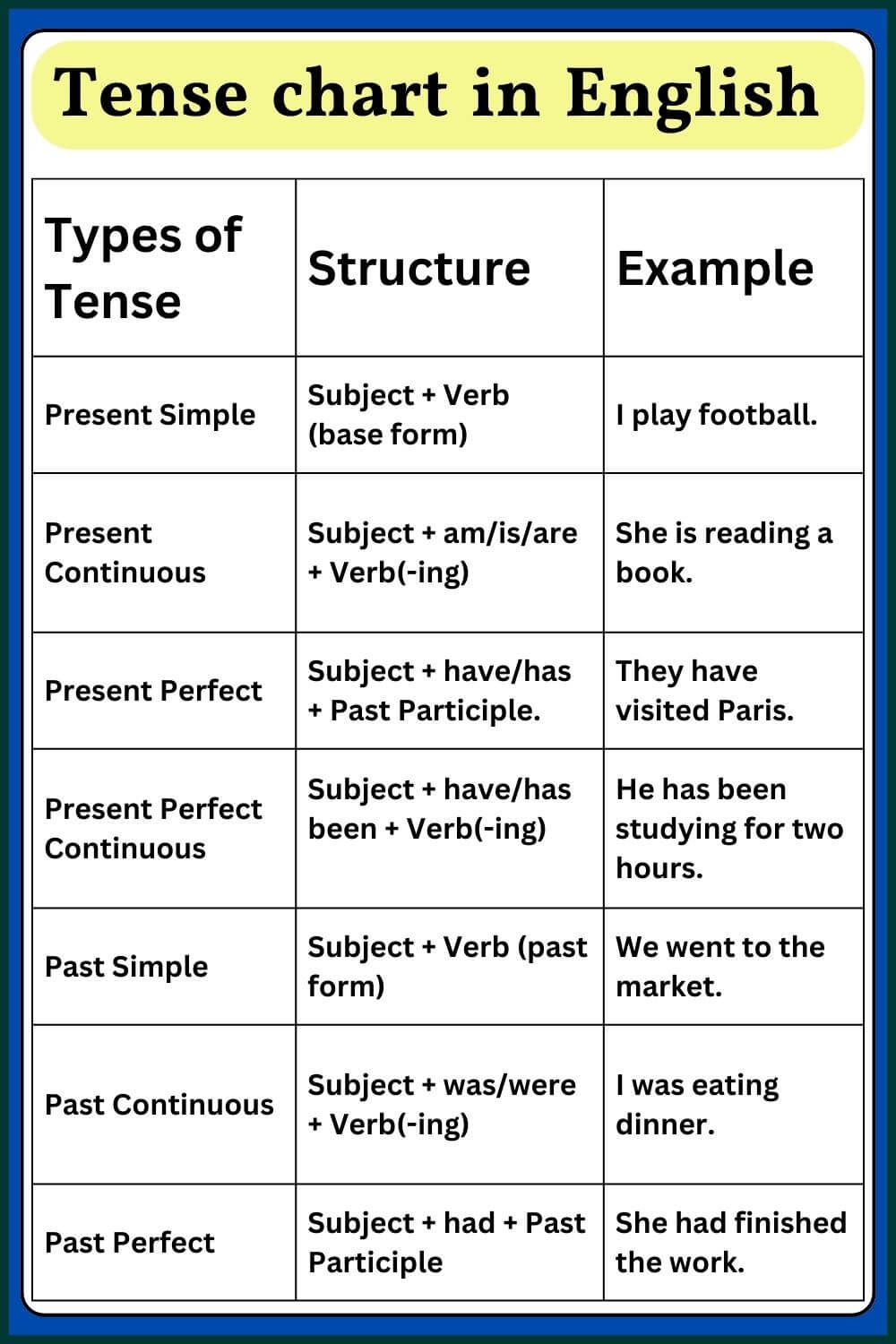Understanding verb tenses is essential for mastering the English language. Verbs are the backbone of any sentence, conveying actions and states of being. By knowing the different verb tenses, you can effectively communicate the timing and duration of an action or state.
In English, there are several verb tenses that are used to express various time frames and situations. Each tense has its own rules and usage, so it’s important to familiarize yourself with them in order to use them correctly in your writing and speaking.
All English Verb Tenses Chart
Present Simple: I eat
Present Continuous: I am eating
Present Perfect: I have eaten
Present Perfect Continuous: I have been eating
Past Simple: I ate
Past Continuous: I was eating
Past Perfect: I had eaten
Past Perfect Continuous: I had been eating
Future Simple: I will eat
Future Continuous: I will be eating
Future Perfect: I will have eaten
Future Perfect Continuous: I will have been eating
Each of these tenses has a specific function and is used in different contexts. For example, the present simple tense is used to describe habits and routines, while the past continuous tense is used to describe actions that were in progress at a specific point in the past.
It’s important to practice using these tenses in context to fully understand how they are used. By using them in sentences and conversations, you can improve your English language skills and become more fluent in expressing yourself.
By mastering the English verb tenses, you can effectively communicate your ideas and thoughts with clarity and precision. Whether you are writing an essay, giving a presentation, or having a conversation with someone, having a good grasp of verb tenses will help you convey your message accurately.
So, take the time to study and practice the different English verb tenses. With dedication and effort, you can improve your language skills and become a more confident and proficient English speaker.
